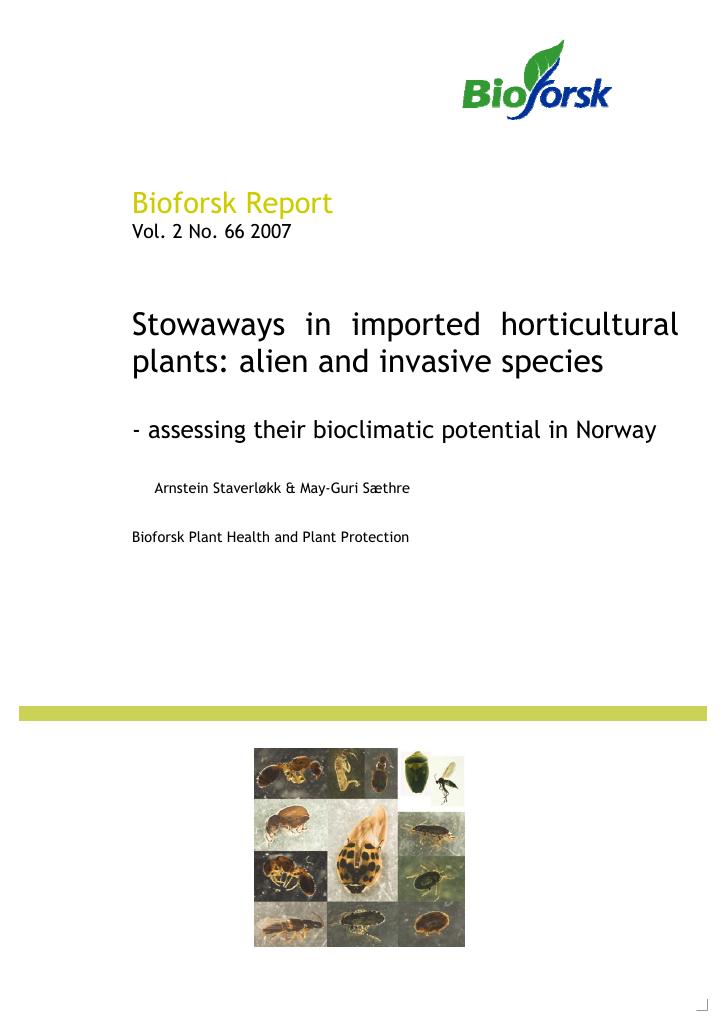Evaluering
Stowaways in Imported Horticultural Plants Alien and Invasive Species, Assessing their Bioclimatic Potential in Norway
Dispersal of alien species, plant pests and other organisms through trade with living plants and plant parts increases with globalisation. Every year a significant amount of horticultural plants for use in urban landscapes and private gardens are imported to Norway from several other European countries. The last decade the amount of such import to Norway has doubled, while the resources allocated for phytosanitary control of this goods on arrival has not had a similar development. Trees and bushes for outdoor use pose a special risk for carrying unwanted stowaways since they are mostly produced outdoors in the export country and are in addition frequently exported with a lump of soil from the production site. After arrival in Norway the plants are dispersed quickly to all parts of the country where they are sold to private and official buyers. The quick handling of this material makes it easy for an organism to stay alive and have the opportunity to establish in the new environment. A study was carried out in 2006 to aiming to find out more about this trade, particularly emphasizing on identifying species of insects and arachnids that were suspected to pass through the national control system. Mattilsynet, the Norwegian Food Safety Authority, is the National Plant Protection Organization of Norway, and perform random sampling of imported plant commodities of this type. Unfortunately, there is practically no surveillance on the introduction of species that are not on the quarantine pest list, and the standard control routines fail in detecting and rejecting plant commodities that contain non-quarantine species. In this study it was mainly searched for insects and arachnids, but snails and slugs, millipedes and other organisms were also found. The plant species sampled were mostly conifers, of which Thuja sp. and Taxus sp. were the majority. Conifers turned out to be excellent in providing shelter and hiding places for small organisms. Three sampling methods were used: 1. Shaking method, 2. Visual observation and 3. Sampling of the compost fallen off the consignments during the transport. The last method added most species to the list. In only six samples of compost investigated as much as 93 different species were identified. During a short period of sampling 1193 individuals were collected travelling as stowaways mainly from Germany, Denmark and the Netherlands. 156 species were identified and additional 26 organisms were identified to the genus level.
Publisert
Eier
Miljødirektoratet
Utgiver
Miljødirektoratet
Utfører
NIBIO - Norsk institutt for bioøkonomi
Forfattere
Arnstein Staverløkk og May-Guri Sæthre
Språk
engelsk
ISBN
978-82-17-00235-2
